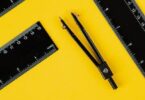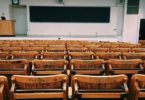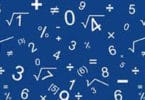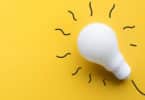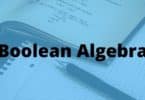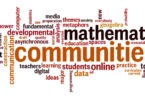Probability Problems and Answers:
A and B toss a coin alternatively, the first to show a head being the winner. If A starts the game, the chance of his winning is
(a) 5/8
(b) 1/2
(c) 1/3
(d) 2/3
Two dice are thrown simultaneously. The probability of getting the sum 2 or 8 or 12 is
(a) 5/18
(b) 7/36
(c) 7/18
(d) 5/36
Three letters are to be sent to different persons and addresses on the three envelopes are also written. Without looking at the addresses, the probability that the letters go into the right envelope is equal to
(a) 1/27
(b) 1/9
(c) 4/27
(d) ⅙
Six boys and six girls sit in a row. What is the probability that the boys and girls sit alternatively
(a) 1/462
(b) 1/924
(c) ½
A problem of mathematics is given to three students whose chances of solving the problem are 1/3, 1/4 and 1/5 respectively. The probability that the question will be solved is
(a) 2/3
(b) 3/4
(c) 4/5
(d) 3/5
Related: data analysis questions
One die and one coin are tossed simultaneously. The probability of getting 6 on die and head on coin is
(a) ½
(b) 1/6
(c) 1/12
A coin is tossed twice. The probability of getting head both the times is
(a) ½
(b) ¼
(c) ¾
(d) 1
From 10,000 lottery tickets numbered from 1 to 10,000, one ticket is drawn at random. What is the probability that the number marked on the drawn ticket is divisible by 20
(a) 1/100
(b) 1/50
(c) 1/20
(d) 1/10
A bag contains 5 brown socks and 4 white socks. A man selects two socks from the bag without replacement. The probability that the selected socks will be of the same colour, is
(a) 5/108
(b) 1/6
(c) 5/18
(d) 4/9
Related: Permutations and combinations practice questions
In a test an examine either guesses or copies or knows the answer to a multiple choice question with 4 choices. The probability that he makes a guess is 1/3 and the probability that he copies the answer is 1/6. The probability that his answer is correct given that he copied it is 1/8. the probability that he know the answer to the question given that he correctly answered it.
(a) 24/29
(b) 8/29
(c) 13/29
A single letter is selected at random from the word “PROBABILITY”. The probability that the selected letter is a vowel is
(a) 2/11
(b) 3/11
(c) 4/11
(d) 0
A box contains 6 nails and 10 nuts. Half of the nails and half of the nuts are rusted. If one item is chosen at random, what is the probability that it is rusted or is a nail
(a) 3/16
(b) 5/16
(c) 11/16
(d) 14/16
The probability of a sure event is
(a) 0
(b) 1
(c) 2
(d) 1/2
A problem of mathematics is given to three students whose chances of solving the problem are 1/3, 1/4 and 1/5 respectively. The probability that the question will be solved is
(a) 2/3
(b) 3/4
(c) 4/5
(d) 3/5
Related: questions on Photoelectric effect
In a throw of a die, what is the probability of getting a number less than 7
(a) 0
(b) 1
(c) 1/2
A man and a woman appear in an interview for two vacancies in the same post. The probability of man’s selection is 1/4 and that of the woman’s selection is 1/3. What is the probability that none of them will be selected
(a) 1/2
(b) 1/12
(c) 1/4
A box contains 10 good articles and 6 with defects. One article is chosen at random. What is the probability that it is either good or has a defect
(a) 24/64
(b) 40/64
(c) 49/64
(d) 64/64
The event A is independent of itself if and only if P (A) =
(a) 0
(b) 1
(c) 0, 1
The probability that a teacher will give an unannounced test during any class meeting is 1/5. If a student is absent twice, then the probability that the student will miss at least one test is
(a) 4/5
(b) 2/5
(c) 7/5
(d) 9/25
Related: question related to Photosynthesis
The sum of two positive numbers is 100. The probability that their product is greater than 1000 is
(a) 7/9
(b) 7/10
(c) 2/5
The probability of a sure event is
(a) 0
(b) 1
(c) 2
(d) ½
Four coins are tossed. The probability that at least one head turns up, is
(a) 1/16
(b) 1/4
(c) 15/16
From a well shuffled pack of cards one card is drawn at random. The probability that the card drawn is an ace is
(a) 1/13
(b) 4/13
(c) 3/52
Twenty tickets are marked the numbers 1, 2, ….. 20. If three tickets be drawn at random, then what is the probability that those marked 7 and 11 are among them
(a) 3/190
(b) 1/19
(c) 1/190
Related: question about space
A bag contains 8 black and 7 white balls. Two balls are drawn at random. Then for which the probability is more
(a) Both balls are white
(b) One ball is white and one is black
(c) Both balls are black
(d) All of the above are equals
A coin is tossed and a dice is rolled. The probability that the coin shows the head and the dice shows 6 is
(a) ⅛
(b) 1/12
(c) ½
(d) 1
Two friends A and B have equal number of daughters. There are three cinema tickets which are to be distributed among the daughters of A and B. The probability that all the tickets go to daughters of A is 1/20. The number of daughters each of them have is
(a) 4
(b) 5
(c) 6
(d) 3
Two cards are drawn from a pack of 52 cards. What is the probability that at least one of the cards drawn is an ace
(a) 33/221
(b) 188/221
(c) 1/26
(d) 21/221
Five digit numbers are formed using the digits 1, 2, 3, 4, 5, 6 and 8. What is the probability that they have even digits at both the ends
(a) 2/7
(b) 3/7
(c) 4/7
Related: States and capitals quiz
The probability of getting a total of 5 or 6 in a single throw of 2 dice is
(a) ½
(b) ¼
(c) ⅓
(d) ⅙
Two numbers are selected at random from 1, 2, 3 ……100 and are multiplied, then the probability correct to two places of decimals that the product thus obtained is divisible by 3, is
(a) 0.55
(b) 0.44
(c) 0.22
(d) 0.33
In a single throw of two dice the probability of obtaining an odd number is
(a) ⅙
(b) ½
(c) ⅓
A party of 23 persons take their seats at a round table. The odds against two persons sitting together are
(a) 10 : 1
(b) 1 : 11
(c) 9 : 10
In a college of 300 students, every student reads 5 newspapers and every newspaper is read by 60 students. The number of newspapers is
(a) At least 30
(b) At most 20
(c) Exactly 25
Related: logarithm questions and solutions
The probability of an event A is 0.5 and that of B is 0.3. If A and B are mutually exclusive events, then the probability of happening neither A nor B is
(a) 0.6
(b) 0.2
(c) 0.21
If from each of the three boxes containing 3 white and 1 black, 2 white and 2 black, 1 white and 3 black balls, one ball is drawn at random, then the probability that 2 white and 1 black ball will be drawn is
(a) 13/32
(b) ¼
(c) 1/32
(d) 3/16
If a dice is thrown twice, then the probability of getting 1 in the first throw only is
(a) 1/36
(b) 3/36
(c) 5/36
(d) ⅙
Three squares of a chess board are chosen at random, the probability that two are of one color and one of another is
(a) 16/21
(b) 8/21
(c) 32/12
Related: quadratic equation questions
Out of 40 consecutive natural numbers, two are chosen at random. Probability that the sum of the numbers is odd, is
(a) 14/29
(b) 20/39
(c) 1/2
Two squares are chosen at random on a chess-board. The probability that they have a side in common, is
(a) 1/9
(b) 2/7
(c) 1/18
Three distinct numbers are selected from the first 100 natural numbers. The probability that all the three numbers are divisible by 2 and 3 is
(a) 4/25
(b) 4/35
(c) 4/55
(d) 4/1155
Two cards are drawn one by one at random from a pack of 52 cards. The probability that both of them are king, is
(a) 2/13
(b) 1/169
(c) 1/221
(d) 30/221
Out of 21 tickets marked with numbers from 1 to 21, three are drawn at random. The chance that the numbers on them are in A.P., is
(a) 10/133
(b) 9/133
(c) 9/1330
Related: Fluid Mechanics Question Bank
If A and B are mutually exclusive events, then the value of P (A or B) is
(a) 0
(b) –1
(c) 1
Two dice are thrown. The probability that the sum of numbers appearing is more than 10, is
(a) 1/18
(b) 1/12
(c) ⅙
A determinant is chosen at random. The set of all determinants of order 2 with elements 0 or 1 only. The probability that value of the determinant chosen is positive, is
(a) 3/16
(b) 3/8
(c) 1/4
If from each of the three boxes containing 3 white and 1 black, 2 white and 2 black, 1 white and 3 black balls, one ball is drawn at random, then the probability that 2 white and 1 black ball will be drawn is
(a) 13/32
(b) 1/4
(c) 1/32
(d) 3/16
Related: Halogen containing Compounds (Chemistry) Sample Paper
An unbiased die is tossed until a number greater than 4 appears. The probability that an even number of tosses is needed is
(a) 1/2
(b) 2/5
(c) 1/5
(d) 2/3
Two persons ‘A’ and ‘B’ have respectively n + 1 and n coins which they toss simultaneously. Then the probability that A will have more heads than B is
(a) ½
(b) > ½
(c) < ½
There are two children in a family. The probability that both of them are boys is
(a) ½
(b) ⅓
(c) ¼
Three coins are tossed together, then the probability of getting at least one head is
(a) 1/2
(b) 3/4
(c) 1/8
(d) 7/8
Two dice are thrown simultaneously. The probability that sum is odd or less than 7 or both, is
(a) 2/3
(b) 1/2
(c) 3/4
(d) 1/3
A bag x contains 3 white balls and 2 black balls and another bag y contains 2 white balls and 4 black balls. A bag and a ball out of it are picked at random. The probability that the ball is white, is
(a) 3/5
(b) 7/15
(c) 1/2
A man alternately tosses a coin and throws a dice beginning with the coin. The probability that he gets a head in the coin before he gets a 5 or 6 in the dice is
(a) 3/4
(b) 1/2
(c) 1/3
A dice is thrown twice. The probability of getting 4, 5 or 6 in the first throw and 1, 2, 3 or 4 in the second throw is
(a) 1
(b) ⅓
(c) 7/36
The probability of getting at least one tail in 4 throws of a coin is
(a) 15/16
(b) 1/16
(c) 1/4
A fair coin is tossed n times. Let X be the number of times head is observed. If P(X = 4), P(X = 5) and P(X = 6) are in H.P., then n is equal to
(a) 7
(b) 10
(c) 14
Related: Surface chemistry questions
A committee of five is to be chosen from a group of 9 people. The probability that a certain married couple will either serve together or not at all, is
(a) 1/2
(b) 5/9
(c) 4/9
(d) 2/9
A card is drawn at random from a pack of cards. The probability of this card being a red or a queen is
(a) 1/13
(b) 1/26
(c) 1/2
(d) 7/13
The probability of happening an event A in one trial is 0.4. The probability that the event A happens at least once in three independent trials is
(a) 0.936
(b) 0.784
(c) 0.904
(d) 0.216
The probability of getting a number greater than 2 in throwing a die is
(a) 1/3
(b) 2/3
(c) 1/2
(d) 1/6
For an event, odds against is 6 : 5. The probability that event does not occur, is
(a) 5/6
(b) 6/11
(c) 5/11
(d) 1/6
Related: d and f block elements important questions
One hundred identical coins each with probability p of showing up heads are tossed once. If 0 < p < 1 and the probability of heads showing on 50 coins is equal to that of heads showing on 51 coins, then the value of p is
(a) 1/2
(b) 49/101
(c) 50/101
(d) 51/101
A box contains 10 red balls and 15 green balls. If two balls are drawn in succession then the probability that one is red and other is green, is
(a) 1/3
(b) 1/2
(c) 1/4
Two dice are thrown simultaneously. What is the probability of obtaining a multiple of 2 on one of them and a multiple of 3 on the other?
(a) 5/36
(b) 11/36
(c) ⅙
(d) ⅓
A box contains 100 tickets numbered 1, 2 …… 100. Two tickets are chosen at random. It is given that the maximum number on the two chosen tickets is not more than 10. The minimum number on them is 5 with probability
(a) 1/8
(b) 13/15
(c) 1/7
A five digit number is formed by writing the digits 1, 2, 3, 4, 5 in a random order without repetitions. Then the probability that the number is divisible by 4 is
(a) 3/5
(b) 18/5
(c) 1/5
(d) 6/5
Related: Trigonometry Practice Questions
Two dice are rolled one after the other. The probability that the number on the first is smaller than the number on the second is
(a) ½
(b) 7/18
(c) ¾
(d) 5/12
If three coins are tossed simultaneously, the probability of getting at least one head
(a) 1/8
(b) 3/8
(c) 1/2
(d) 7/8
A fair dice is tossed two times. The probability that the second toss results in a value that is higher than the first toss is
(a) 2/36
(b) 2/6
(c) 5/12
(d) 1/2

